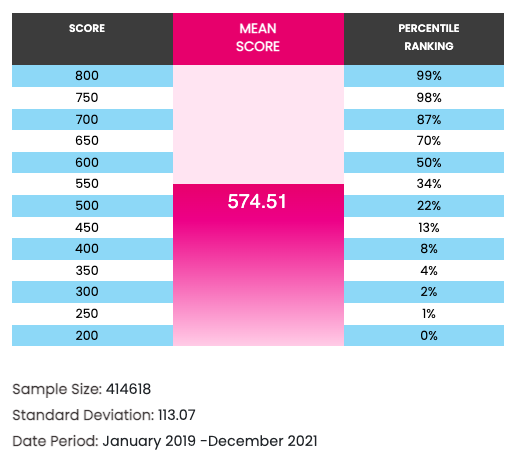I’ve been tutoring GMAT prep students for
16 over 20 years now, ever since 2000, when I was a junior at Harvard, helping friends and family prepare for this test. Upon my graduation, I became a full-time, professional tutor for the Princeton Review. Shortly thereafter, I started my own private, full-time tutoring practice, McElroy Tutoring, which has continued to this day. In those 20+ years I have amassed over 20,000 hours of teaching experience, both in-person and via Zoom and Skype, which means that I’ve seen lots of GMAT students come and go. In other words, my sample size for measuring score improvements is pretty large for just one tutor, anecdotal as my experiences may still be.
A common answer to the question “how much can I expect my GMAT score to improve?” is “50 to 150 points.” I think that’s a reasonable answer, but let’s get into a bit more detail, because I’ve seen improvements of as much as 300 points on the GMAT…but only on the low end of scores.
Let’s start with standard deviation. According to GMAC, the standard deviation of the GMAT is 121 points. This means that over \(\frac{2}{3}\) (68%) of all GMAT test-takers will score somewhere between a 430 (15%) and a 670 (83%). If you can manage to break your way out of this massive group of students, then your chances of B-school admission are much greater.
A standard deviation (SD) is a great way to predict test-score improvements, since most test-takers won't improve much more than 1 SD, and nearly none of them will improve 2 SDs or more, except for very low scorers.
Second, a key principle: it’s much easier to improve low scores than it is to improve high scores. Why? It’s a question of competition. A 500 on the GMAT is 31% and a 600 is 61%. A big jump, yes, but possible with 100 hours or more of prep, because you’re leapfrogging a relatively weaker portion of GMAT test-takers. I've seen plenty of students go from 500 to 650-plus for this reason.
However, a 600 on the GMAT is a 61%, and a 700 is 89%. It’s a smaller difference in percentiles, which might lead some to conclude that it’s an easier improvement to make, but I would disagree--in reality, it's a tougher task than is 500 to 600. The same goes for 700 to 800…it’s only a 10% differential, but you have to compete with the top 10% of GMAT test-takers, a highly competitive and intelligent bunch, which is what makes it so much harder to do.
That being said, below is my list of realistic GMAT score improvements if you are willing to put in at least 100 hours of prep, based upon your starting score.
Please keep in mind that of course some students will improve more, or less, than the improvements listed. Hence the term “realistic,” which could also be construed as “average” (for dedicated students).
200 to 450 (+250 pts) = 0% to 20% (+20)
300 to 500 (+200 pts) = 3% to 31% (+28)
400 to 600 (+200 pts) = 12% to 61% (+33)
500 to 650 (+150 pts) = 31% to 73% (+32)
600 to 700 (+100 pts) = 61% to 89% (+28)
700 to 750 (+50 pts) = 89% to 98% (+9)
750 to 780 (+30 pts) = 98% to 99% (+1)
Note: it’s super-hard to get an 800. If you can score a 750, then you can score an 800…but it will take a lot of persistence and luck. Only about .01% of GMAT test-takers earn an 800, which is 1 out of every 10,000.
Personally, I have scored in the 700s all 6 times I've taken the GMAT (including the GMAT online), and have earned perfect scores on the SAT, ACT, and GRE—but I'm still trying for a GMAT perfect score of my own. As I’ve always said: perfection is attainable, but not maintainable!






















